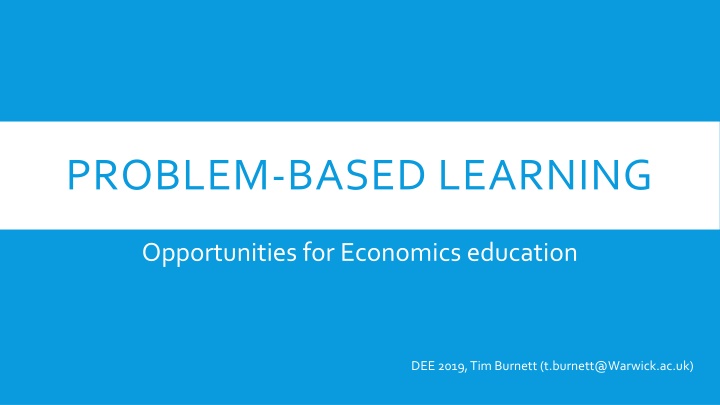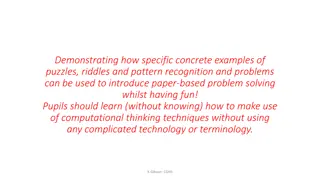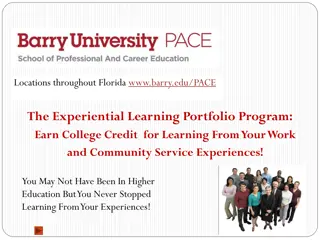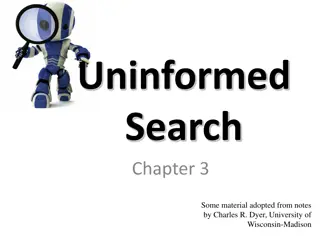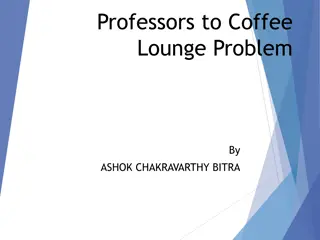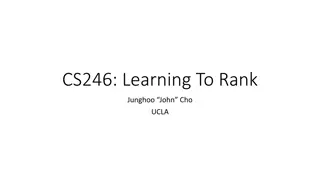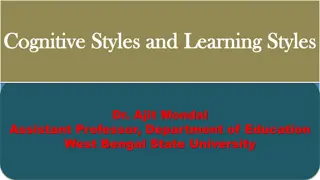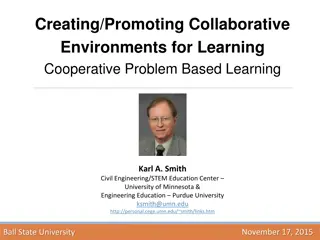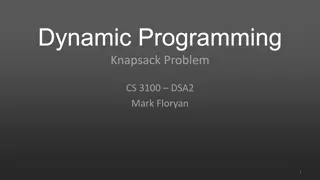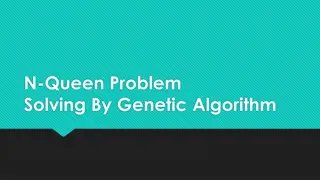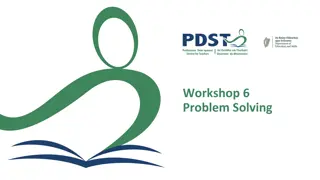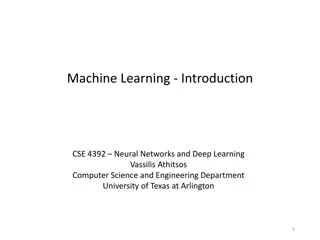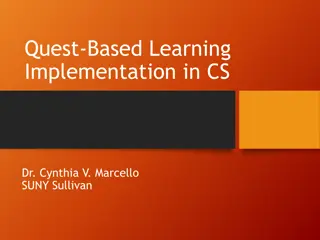PROBLEM-BASED LEARNING
Explore the impact of Problem-Based Learning (PBL) in Economics education, focusing on student-centered approaches, constructive alignment, and the effectiveness of PBL over conventional teaching methods. Understand how PBL enhances critical thinking, problem-solving skills, and self-directed learning in students.
Download Presentation

Please find below an Image/Link to download the presentation.
The content on the website is provided AS IS for your information and personal use only. It may not be sold, licensed, or shared on other websites without obtaining consent from the author.If you encounter any issues during the download, it is possible that the publisher has removed the file from their server.
You are allowed to download the files provided on this website for personal or commercial use, subject to the condition that they are used lawfully. All files are the property of their respective owners.
The content on the website is provided AS IS for your information and personal use only. It may not be sold, licensed, or shared on other websites without obtaining consent from the author.
E N D
Presentation Transcript
PROBLEM-BASED LEARNING Opportunities for Economics education DEE 2019, Tim Burnett (t.burnett@Warwick.ac.uk)
It is helpful to remember that what the student does is actually more important in determining what is learned that what the teacher does. - Shuell (1986), p.429 2
OUTLINE The problem with existing teaching methods What do we want from students? Constructive alignment and how PBL can help? The PBL process Structuring, scaffolding Some examples 3
LOOK FAMILIAR? In what way does this look like the world of employment, or higher level study in Economics? What is this training students to do? 4
THE ISSUE WITH CONVENTIONAL LEARNING A lecturer-centred learning approach Lecturer is the sage on the stage Tests ability of students to memorise what they are being told Content-heavy learning outcomes, assessed using conventional assessment techniques (essays, exams) Students learn by what they do 5
THE TINKERBELL EFFECT If we teach students to solve enough specific examples then they ll magically be able to apply this to solve new abstract examples 6
WHAT DO WE WANT FROM STUDENTS? If students learn by doing, in what way does the way that we teach encourage these type of skills? 7
THE PBL PROCESS: OVERVIEW Specifically aims to overcome the issues of large lectures Pioneered in teaching medicine PBL learning primarily takes place in small-class setting Emphasises self-directed research on the part of students Intrinsically constructivist 8
THE PBL PROCESS: PROCESS Students in groups are issued with a stimulus ? Stimuli can be scenarios, case studies, news stories which feature a problem (problems are often not really problems in the traditional sense, more they are things we don t understand fully) Ultimately the problem can be broken down into some sub-issues which you want students to investigate Problems should be relatively complex so as to require students to undertake research In groups students should identify the issues they need to address in order to understand the problem (very abstract at this stage, I know) As a group they divide research responsibilities and conduct self-directed study in order to answer the research task they were set The group reconvenes and synthesises the individual research findings of the different members in order to understand the problem 9
THE PBL PROCESS: PROCESS Allocation of research within group Self- directed research Stimulus Discussion Synthesis Debrief 10
THE PBL PROCESS: BENEFITS Active learning which requires continuous student engagement Develops comprehension and understanding, not just knowledge Genuinely trains students to understand how to approach Develops team-working, communication, public speaking, Constructively aligns with higher-level Intended Learning Outcomes and programme-level graduate and employment skills 11
THE PBL PROCESS: THE ROLE OF THE TUTOR PBL tutors need to evolve in their role from sage on the stage (didactic, provider of information) toward guide on the side Encourage students but don t instruct the key is that students search for the answer without interference Ask critical questions Debriefing is important but it s important not to get into if you d done it this way instead ask students to reflect on their outcomes and maybe prod them into specific approaches they might have employed ( did you consider this approach? ) and encourage discussion students learn from each other Don t feel guilty about not explaining in minute detail things to students help students understand that this approach is for their own benefit (either through intrinsic motivation to be a good academic, or instrumentally it ll help them get a job) 12
THE PBL PROCESS: COMMON ISSUES We need to be sure that students learn X, Y, and Z: Anxiety about content absorption is common; but remember that just because you tell a student something, doesn t mean they re going to remember it You are equipping students with skills to find answers, not be told students are smarter than we think, but we frequently fail to challenge them Lazy group members/lack of participation: It s important to learn (as a tutor) how to encourage students to participate Student expectations: It may be necessary to help students 13
THE PBL PROCESS: STRUCTURING AND SCAFFOLDING You have some specific content you want students to learn about and can t trust students to research that content on their own? Designate one member of each group as a moderator who will ask their group specific questions, which will guide their thinking Set specific reading that you want the students to explore for answers Create frameworks for how you would like students to present their findings 14
ARE THERE NEVER ANY TAUGHT CLASSES? Not entirely There might be skills-based classes which equip students with some competencies: Stats/econometrics Mathematical methods Computer lab sessions This might require coordination between modules It s rare to see these types of subjects taught via PBL (but watch this space ) 15
GETTING STARTED Quick and easy: In tutorials, don t ask students to reproduce variations on models you ve covered in lectures (you re teaching them how to solve models, not economics, and you ve already told them this once give them some practice questions to do in their own time if you feel guilty) Instead consider asking students to explain a specific stimulus and maybe debrief at the end 16
GETTING STARTED More involved: Consider tutorials as the primary teaching environment, not a place to practice what students have been told in lectures Consider entire module overhaul perhaps begin with an elective where students are more specifically interested in the topic (modules around issues like Applied Micro, Regulation and Competition where students have a pre-existing toolkit may be good candidates) 17
SOME INSPIRATION https://www.maastrichtuniversity.nl/education/why-um/problem- based-learning 18
